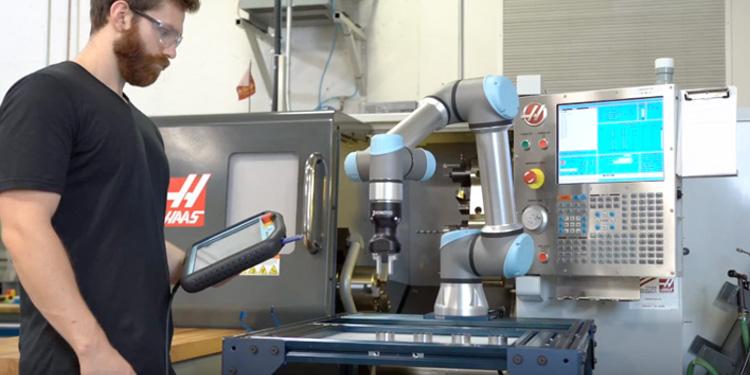Machine Tending CNC Robots:
Benefits and Challenges
CNC robotic machine tending is a growing trend in manufacturing today. In today’s highly competitive market, manufacturers are looking for every advantage. So why are manufacturers looking to robotic automation for machine tending tasks? This article describes the basics of CNC robotic machine tending, the benefits and challenges of this technology, and when a CNC robot is right for you.
What is CNC Machine Tending?
Robotic machine tending uses a robot to at least partially operate a machine. Typically, these are machines like CNC machines, mills, presses, etc. A robot can perform primitive tasks like loading, unloading, and up to more in-depth tasks like fully operating a piece of equipment. CNC robot machine tending is this concept applied exclusively to CNC machines. Therefore, these robots are found in any industry where CNC machines are used.
Collaborative robots have been particularly efficient for CNC machine tending over the last years. Manufacturers like Universal Robots have been a big player in the CNC machine tending application space and many third-party companies have also developed standardized solutions to facilitate the integration with CNC machines.
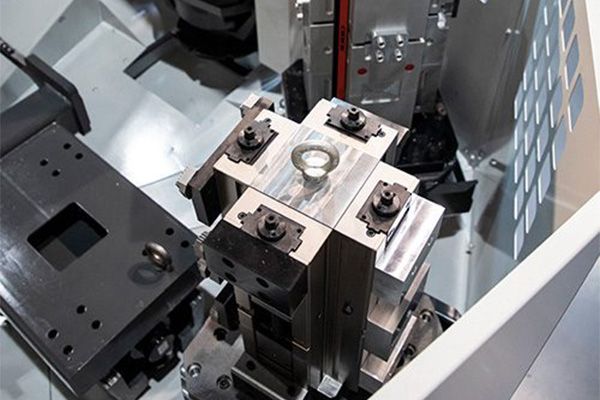
Automated CNCs vs Robot CNC Systems
It is important to make the distinction between automated CNCs and robot CNC systems. Automated CNCs refer to CNC machines with certain add-on components like pallet loaders and part feeders. These components are useful for automation but lack the flexibility and functionality of CNC robot arms.
For example, CNC automation systems often solve a very specific problem. This might be something like a part feeder. However, if the part changes or a need arises to feed and unload a variety of parts, this system will not be able to handle this task. On the other hand, a machine tending robot is more robust in that it can be reprogrammed for a variety of tasks and redeployed across several use cases. This makes it a more valuable piece of equipment for dynamic manufacturing environments. It also allows companies to have a better return on their investment since they can maximize the utilization rate of their robot.
Why use CNC Robots for Machine Tending?
CNC machine tending robots offer certain advantages for manufacturers. These benefits can be especially useful in dynamic manufacturing environments. Such benefits include:

Increased
Productivity

Cost Savings
Over Time
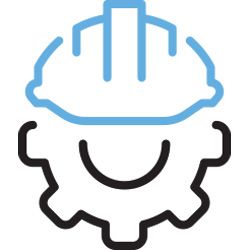
Worker
Safety

Increased
Reliability
Increased Productivity
CNC machine tending robots offer increased productivity over human operators. They often work faster and more efficiently. They also make fewer mistakes which saves material, increases productivity, and justifies the cost of robotics.
Cost Savings Over Time
Robots can eventually save manufacturers money over time when placed in the right situation. This is certainly dependent on the application being right for the robot. If the robot is misapplied, it might not be producing at a very high level. For example, consider a machine tending robot that is deployed in a low-volume machine tending task. In this scenario, it might not produce enough to justify its cost. This is why redeploying the robot to other tasks, or even other CNC machines can drastically increase savings. However, a robot in the right application can be very productive and generate enough revenue to pay off its cost in a short amount of time. An example of this could be a machine tending robot deployed in a high-volume machine loading task that technicians struggle to keep up with and their other duties. The industry standard ROI has been reduced to 6-18 months especially with collaborative robots like Universal Robots.
Worker Safety
Worker safety is typically a primary consideration for manufacturers. Direct contact with machines is often the most dangerous place in a facility. Therefore, it makes sense to redeploy human operators to safer and more complex tasks.
Increased Reliability
CNC machine tending robots are also very reliable. Since robots don’t get injured or become sick, you can expect less downtime due to human factors. Robots have incredible uptime and can perform just as well at the end of the day as at the beginning.
Potential Challenges of CNC Robots
Some challenges come with CNC robots that you should be aware of. Being able to take on these challenges will allow you to reap the benefits this technology offers. These challenges include:

Robot-Machine
Interface
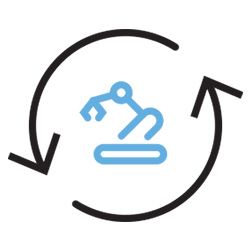
Efficient Robot
Redeployment
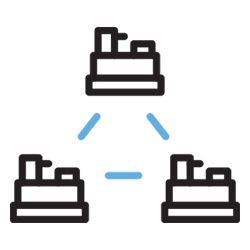
Integration b/t
Multiple Machines

Achieving Lights
Out automation
Robot-Machine Interface
The link between robots and CNC machines has traditionally been a challenge. This is because most CNC machines are designed with human operators in mind. Nowadays, we are seeing more and more companies releasing robot interfaces, but they are either costly and/or non-retrofittable between CNC manufacturers. It is possible to find solutions from integrators or even your own DIY projects when needed, but these solutions can be costly and time-consuming.
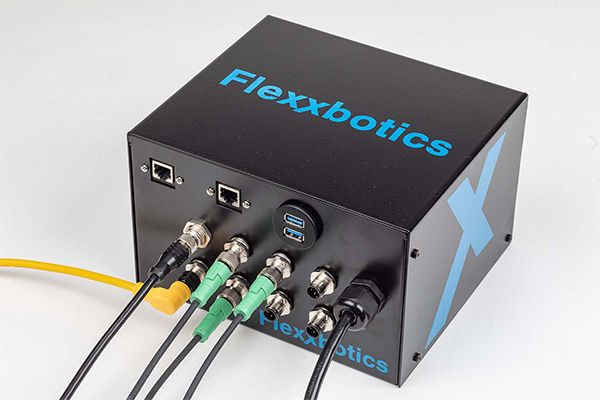
Flexxbotics offers a standardized off-the-shelf solution purpose-built for this problem. FlexxCNC™ links Universal Robots cobots and CNC machines from several brands. This removes the headache of interfacing to a CNC yourself, which is a massive task even for experienced technicians. It also means you can avoid paying the hefty development costs for outsourced integration solutions.
Efficient Robot Redeployment
We know that to maximize the potential of your UR robot investment, being able to redeploy it to different tasks and CNC machines is a must. However, robot redeployment comes with challenges. When a robot is redeployed, it might not end up in the same location it was programmed in. This means you might need to reprogram your robot. This is very inefficient, so being able to reference the program to the machine is a solution to consider.
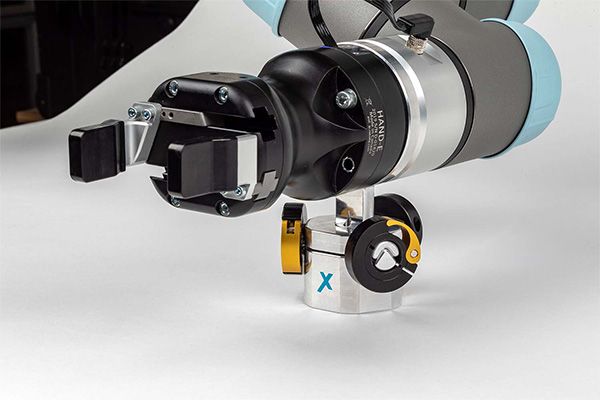
Machine Tending Robot
The Flexx Reference is, then, a must-have for your robot redeployment. First, it is a mechanical reference used for this purpose. It updates all the existing waypoints so you don’t have to spend time reprogramming your robot for a task it is already programmed for.
Integration Between Multiple Machines
Next, even if you solve the robot-to-CNC communication problem, the issue compounds when tending to multiple CNC machines. Since manufacturing facilities with multiple CNC machines are likely to have several controller brands, repeating this integration is more complex than copy-pasting.
The Flexx CNC is a standardized middleware and URCap designed to make a Universal Robot easily communicate with multiple CNC machines. This means you can simply use the same product instead of developing separate solutions for each CNC machine. The solution works with major CNC brands like:




Achieving Lights Out Automation
Lights out manufacturing has been one of the main goals of the industry. It is the ability to continue production with little to no human supervision. This is a common advantage of robotics in certain applications. For example, this is possible for CNC machine tending applications as long as there is communication between robot and CNC machine.
To truly run a robot on a CNC machine lights out you need to automate all aspects including executing G-Code/M-Code, operating vises, opening/closing doors, and managing stop/start cycles. If you want to avoid manual interference then, you need a robot to CNC interface to manage all of these aspects. However creating an interface can be complex, time-consuming, and costly. Not to mention you need a different interface for each CNC machine you need to interface to. This is why the Flexx CNC from Flexxbotics includes all the middleware, URCap, and interface to control and manage all those elements between your UR robot and your CNC machine. This allows for optimal production efficiency by maximizing daily output.
When is a CNC Robot Right for Your Machine Tending Operation?
The challenges and benefits of CNC robot machine tending systems are clear. So how do you know if this technology is right for you? This is a complicated question to answer, but a few key considerations might lead you to think deeper about the possibility of automating.
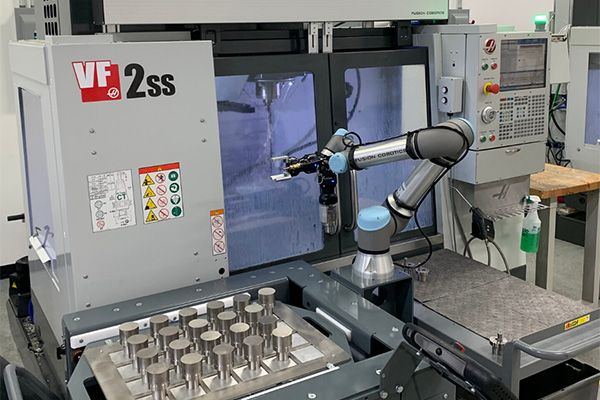
You Need Faster and More Efficient Production
Speed is a common catalyst for automation. Human operators have a limit to how fast they can work. Fatigue can lead to slower production, mistakes, and wasted material. You can see how these problems can lead to lost revenue. CNC robots are able to often perform faster than human technicians. Additionally, they can keep up this pace for as long as there is material to feed it. This allows them to outproduce humans at a more efficient rate in many cases.
Even if a robot can’t go faster than your human operators, its capability to work unattended and lights out will bring more productivity. This is as long as your unattended setup is efficient.
You Are Struggling with an Unstable Labor Pool
Finding great employees in manufacturing seems to be more difficult than ever before. Gaps in your workforce are detrimental to your ability to maximize production and revenue. CNC robots help to fill this gap and stabilize your workforce. They will also empower your actual workforce to evolve and learn to work with that new technology, especially collaborative robots. It will bring them more valuable knowledge and motivation to stay with your company longer.
You Must Reduce Labor Costs
In a highly competitive manufacturing industry, companies are looking for a competitive edge everywhere they can. Robotics reduces the cost of employment to your bottom line. This includes both wages and other “hidden” costs such as healthcare and other benefits. The large up-front cost of robotics is eventually offset by the relief of employment costs in the right application. The minimal expenses post-integration like maintenance are considered minor compared to the cost of employing a workforce.
When we understand the benefits and challenges of CNC machine tending, a successful automation project needs the right products and tools. First, you need to take into consideration the CNC park that your company has. Then, you may need to integrate that robot to many different machines to make it profitable.
This is why the right solutions like FlexxCNC™ from Flexxbotics will help you simplify your CNC robot integrations and maximize your return on investment. It is a standardized machine tending hardware and software UI to help automate cobot machine tending operations.

